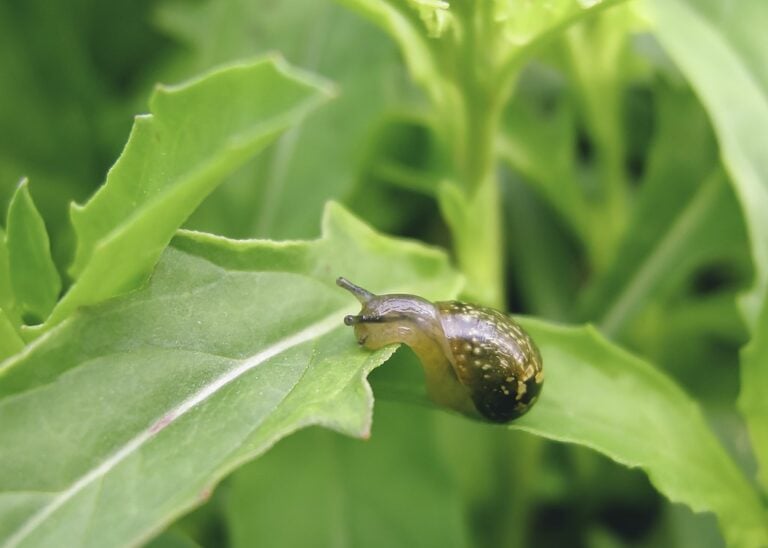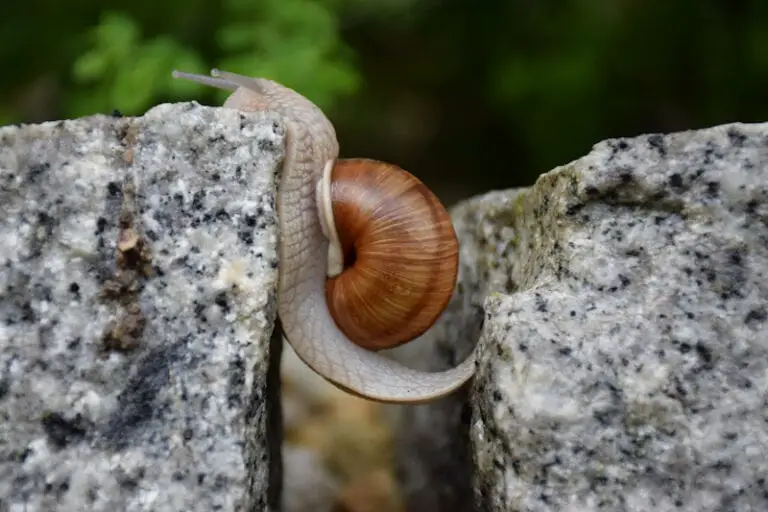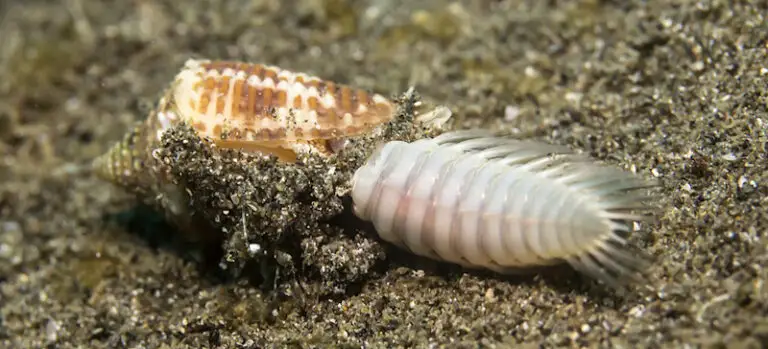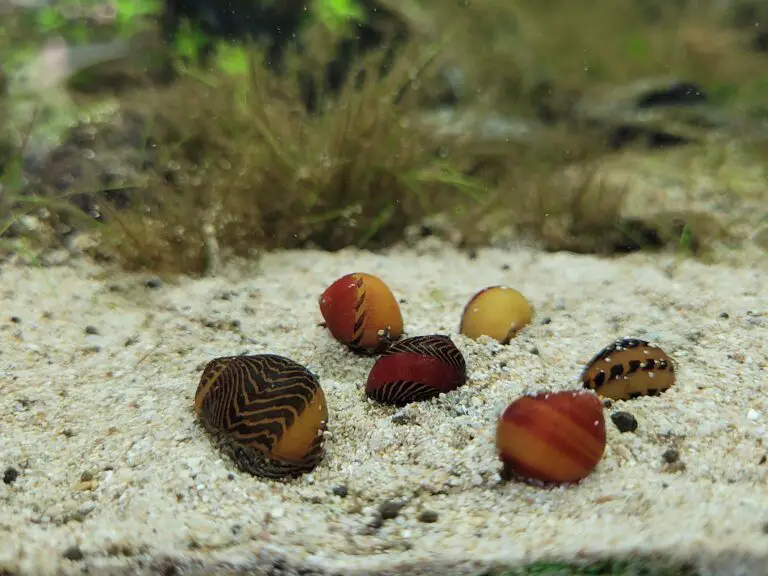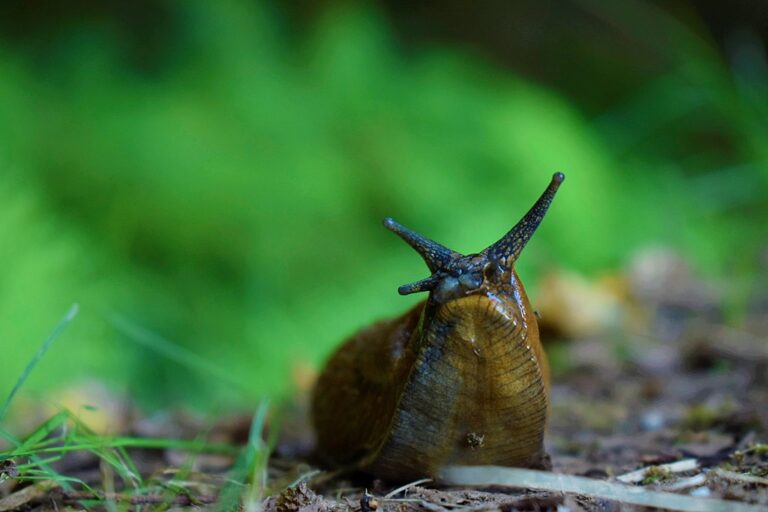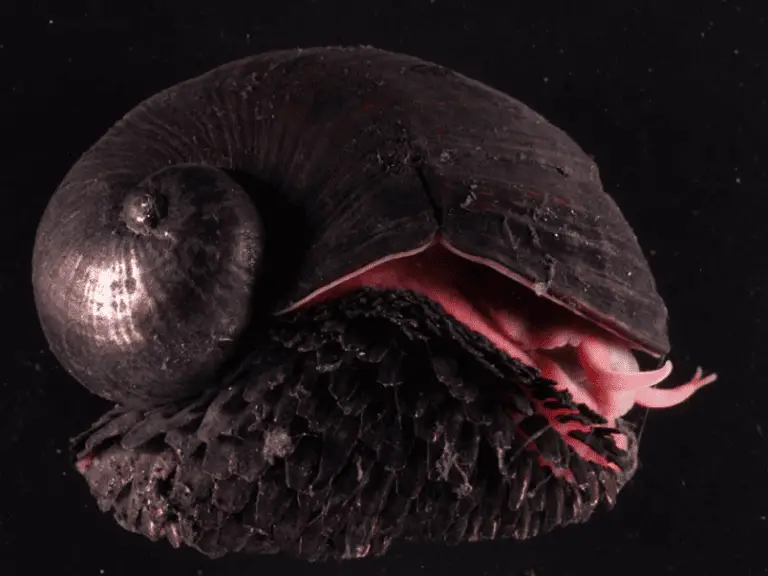Giant African Land Snail: A Comprehensive Exploration of an Extraordinary Species
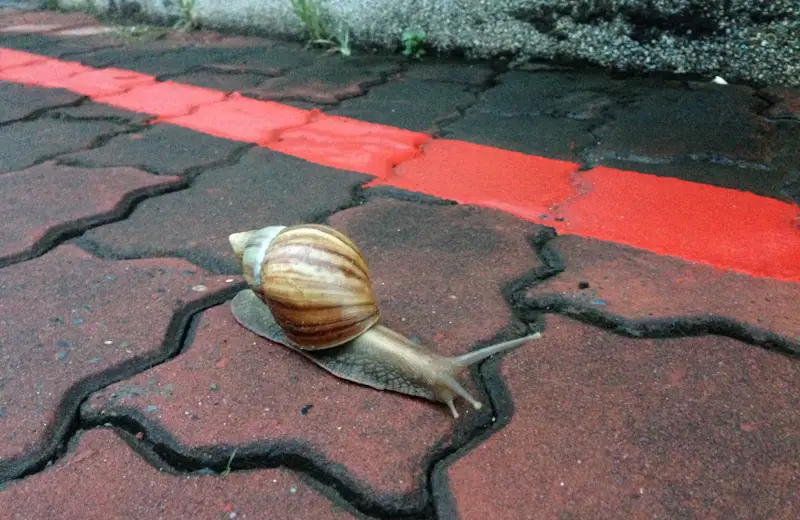
Brief Overview of the Giant African Land Snail (GALS)
The Giant African Land Snail (Achatina fulica) is a species of air-breathing, tropical land snail native to East Africa. It is one of the largest species of land snails in the world, with adults ranging from 7-8 inches in length and weighing up to 1 pound. The GALS has a unique biology that allows it to survive in a wide range of environments and it has been introduced to many countries around the world, both intentionally and unintentionally.
The shell of the GALS is conical and spiraled, with distinct bands or stripes. It is made up mostly of calcium carbonate, which makes it durable but also sensitive to acidification.
This feature can be used as an indicator for climate change research. The snail’s tentacles carry sensory organs that allow it to sense touch, smell and taste its surroundings.
Importance of Understanding this Species
The GALS plays an important role in its native ecosystem as a decomposer; consuming dead plant matter, animal carcasses and even other snails. However, when introduced into new areas where natural predators may be absent or prey competition may be low; GALS populations can grow exponentially and have detrimental effects on agricultural crops or native flora.
Additionally, GALS are known hosts for various parasites including rat lungworm which can cause meningitis in humans if consumed accidentally on contaminated produce or touched without proper hand hygiene. Awareness programs aimed at preventing introduction pathways such as bans on importation or confiscation at borders have been successful in reducing the spread of invasive populations.
By studying the biology and behaviors of this species we can better understand their impact on both ecological systems and human health concerns. This knowledge can help inform conservation efforts aimed at controlling invasive populations while promoting coexistence with native populations in their natural habitats.
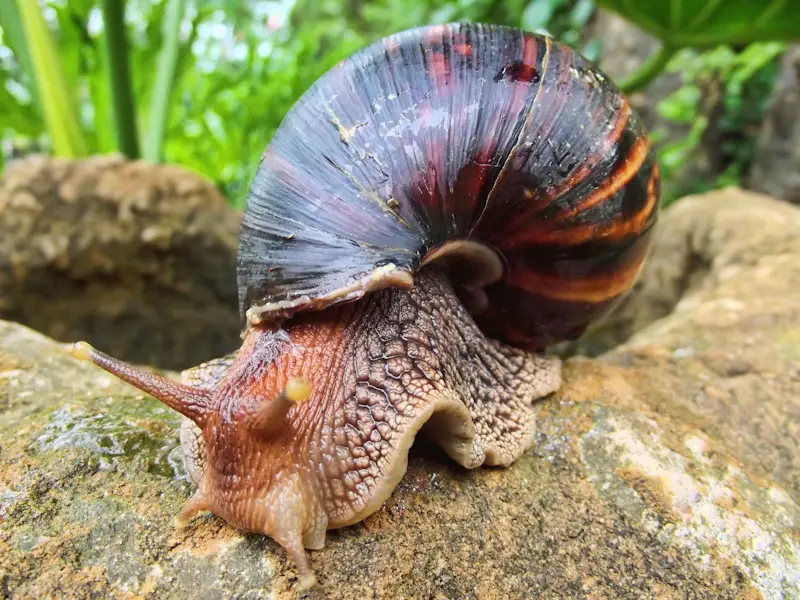
Physical Characteristics
Size and Weight Range
The Giant African Land Snail (GALS) is the largest land snail species on Earth. Adults can range in size from 7-8 inches in length and 2-3 inches in diameter, with some rare specimens reaching up to a foot long.
The weight of GALS varies depending on their age and size but can range from 100-200 grams. GALS are hermaphrodites, meaning they possess both male and female reproductive organs.
Their reproductive organs are located near the head, with the male genital opening being slightly below that of the female. This unique characteristic allows GALS to mate with any other mature individual they come across.
Shell Shape and Coloration
The shell of a Giant African Land Snail is typically conical in shape, with a noticeable spiral pattern. It consists of calcium carbonate and serves as protection for the snail’s soft body parts. Shell coloration can vary widely depending on their habitat, ranging from light brown to dark brown or even black.
Interestingly, the coloring of their shells can be used to determine their age. As GALS grow older, their shells become thicker and denser, which changes its coloration as well.
Tentacles and Eye Structure
Giant African Land Snails have two pairs of tentacles; one pair is longer than the other. The longer pair is used for vision while the shorter pair helps them identify chemicals such as food or potential mates.
Their eyes are located at the tips of these longer tentacles which allow them to see above their bodies as they move along surfaces such as trees or walls. Despite having poor eyesight compared to humans it’s more than enough for them because they spend most days underground or hiding under vegetation where sight isn’t essential.
In addition, GALS are able to retract their tentacles when threatened or disturbed. This helps protect these sensitive appendages from damage.
Conclusion
Understanding the physical characteristics of Giant African Land Snails is crucial for anyone interested in learning more about this fascinating species. Their large size, unique coloring and eye structure, as well as their reproductive organs, make them a standout species among land snails. In the next section we’ll discuss where these incredible creatures can be found.
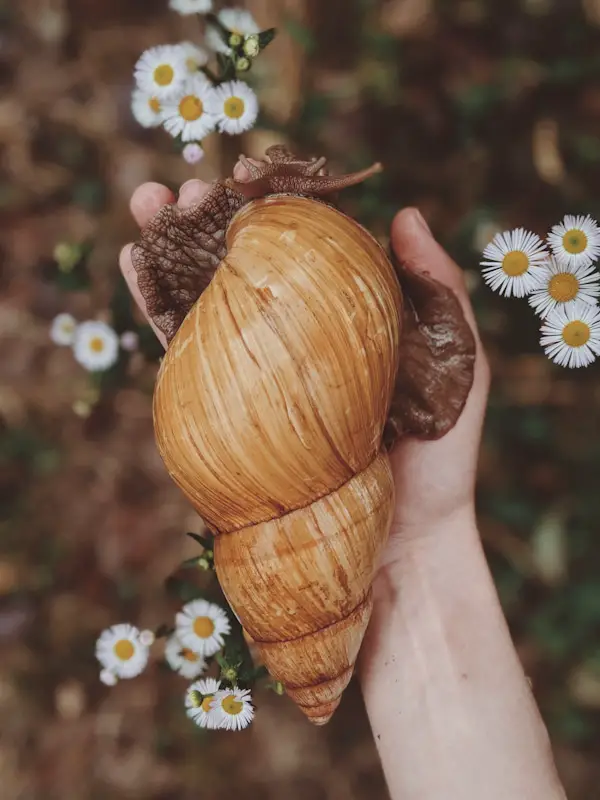
Habitat and Distribution
Natural range of GALS in Africa
The Giant African Land Snail (GALS) is native to East Africa, specifically to the coastal forests and savannas of Kenya, Tanzania, and Mozambique. They are known to inhabit areas with high humidity and rainfall.
In their natural habitat, GALS can be found in a variety of different environments such as thick vegetation, riverbanks, swamps, and even near human settlements. One interesting characteristic of GALS is their ability to aestivate during prolonged dry periods.
When conditions become too hot or dry for their liking, they will seal themselves inside their shells with a layer of mucus over the opening. This allows them to conserve moisture until conditions improve.
Introduction to other parts of the world as invasive species
Unfortunately, due to human activities such as international trade and travel, GALS have been introduced into other parts of the world where they do not naturally occur. These introductions have led to GALS being considered one of the most invasive species on earth.
GALS have been introduced into many countries across Asia as well as South America and North America. They were first introduced into Florida in the 1960s by a boy who brought back three snails from Hawaii as pets.
These snails quickly multiplied and spread throughout southern Florida where they continue to cause problems today. In addition to causing damage to crops and gardens by consuming large amounts of vegetation, GALS can also carry diseases that can be transmitted to humans such as rat lungworm disease which can cause meningitis.
Preferred habitats including soil type, moisture, and temperature
Giant African Land Snails prefer warm temperatures between 20-30 degrees Celsius (68-86 degrees Fahrenheit). They thrive in areas with high humidity levels between 70-90%. They need access to moist soil in order to burrow and lay their eggs.
Soil type is also an important factor for GALS as they require a soil that is moist but well-draining. In their natural habitat, GALS are often found in areas with rich, fertile soil.
When introduced as invasive species, GALS have been known to thrive in a variety of different habitats including agricultural land, gardens, forests and urban areas. They are adaptable creatures that can survive in many different conditions which makes controlling their spread all the more difficult.
Overall, the habitat and distribution of Giant African Land Snails is a fascinating subject that highlights the impact humans can have on ecosystems around the world. By understanding more about this species and how they interact with their environment, we can better protect both them and ourselves from the negative consequences of invasive introductions.
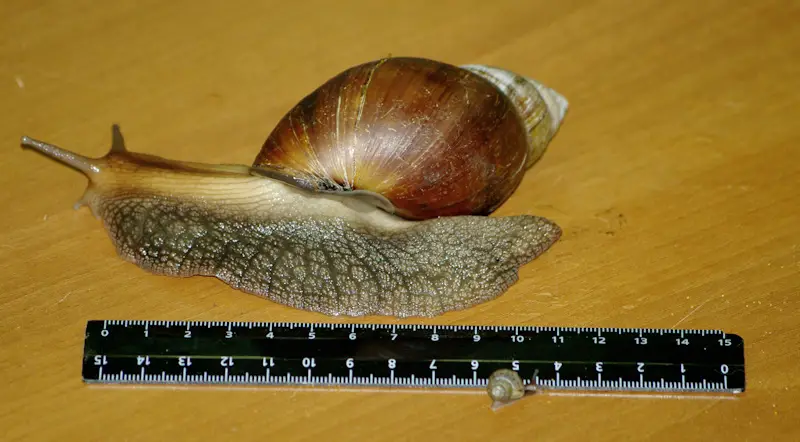
Diet and Feeding Habits
Types of food consumed by GALS in the wild
Giant African Land Snails are herbivorous creatures, meaning that their diet primarily consists of plant matter. In their natural habitat, they feed on a variety of vegetation such as leaves, flowers, and fruits.
They are known to be particularly fond of fruits like papaya and mangoes as well as vegetables like cucumber and pumpkin. These snails have a specialized radula, which is a ribbon-like structure with tiny teeth that is used for scraping food from surfaces.
This allows them to consume a wide range of plant matter despite not having any teeth in their mouth. Furthermore, GALS have been observed eating soil or dirt which many believe is an important source for minerals in their diet.
Impact on crops and vegetation when introduced as invasive species
Although they may seem harmless, Giant African Land Snails have become notorious for their devastating impact on crops and vegetation when introduced into new habitats as an invasive species. The snails can consume up to 500 different types of plants including agricultural crops like corn or lettuce.
The feeding habits of these snails can cause serious damage to crops leading to significant economic losses and even food shortages in some areas where agriculture is the main source of livelihood. In addition, GALS can also act as vectors for various diseases that affect plants leading to lower crop yields or complete crop failure.
These factors combined make GALS one of the most destructive invasive species around the world. It is important to note that human activities such as trade or release into the wild by pet owners have facilitated the spread of Giant African Land Snails beyond their native range causing significant ecological problems in many parts of the world.
The Gut Microbiome: A Key Factor in Diet Adaptation
Interestingly enough, Giant African Land Snails are known to harbor a diverse community of microorganisms in their gut that plays a critical role in their ability to digest and extract nutrients from plant matter. The digestive system of these snails is finely tuned to allow for efficient nutrient absorption and utilization, which is thought to be facilitated by the symbiotic relationship between the snail and its gut microbiome.
Studies have shown that changes in the composition of the gut microbiome can impact the feeding behavior and nutritional status of GALS, underscoring the importance of this relationship for both host and bacteria. Understanding how this system works could provide valuable insights into how plant-eating animals adapt to different diets over evolutionary time scales.
Control Measures for Invasive Populations
Given the destructive nature of Giant African Land Snails when introduced into new habitats as invasive species, it is imperative that swift action is taken to control their populations where possible. Control measures include physical removal, application of chemical pesticides or biological agents like nematodes or fungi. However, many experts advocate for a more holistic approach that includes prevention through better border management practices, public education on responsible pet ownership or trade regulation among others.
It should be noted that eradication of GALS populations in heavily infested areas can be challenging due to their high reproductive potential and some resistance to certain control methods. Therefore, early detection and rapid response are key factors in minimizing damage caused by these invasive snails.
The North American Invasion
One notable example of successful control efforts against an invasive population of Giant African Land Snails took place in Florida where they were first detected in 2011. A multi-agency task force was quickly assembled with the goal of eradicating this population before it could establish itself permanently. The task force employed a variety of control methods including manual removal, use of baits laced with pesticides as well as releasing sterile males into the environment to disrupt mating patterns.
These efforts paid off and by 2019, Florida declared victory over the invasion with no snail sightings reported for several years. The success of this control effort underscored the importance of early detection, rapid response, and collaboration between different agencies in controlling invasive species before they become too established to eradicate.
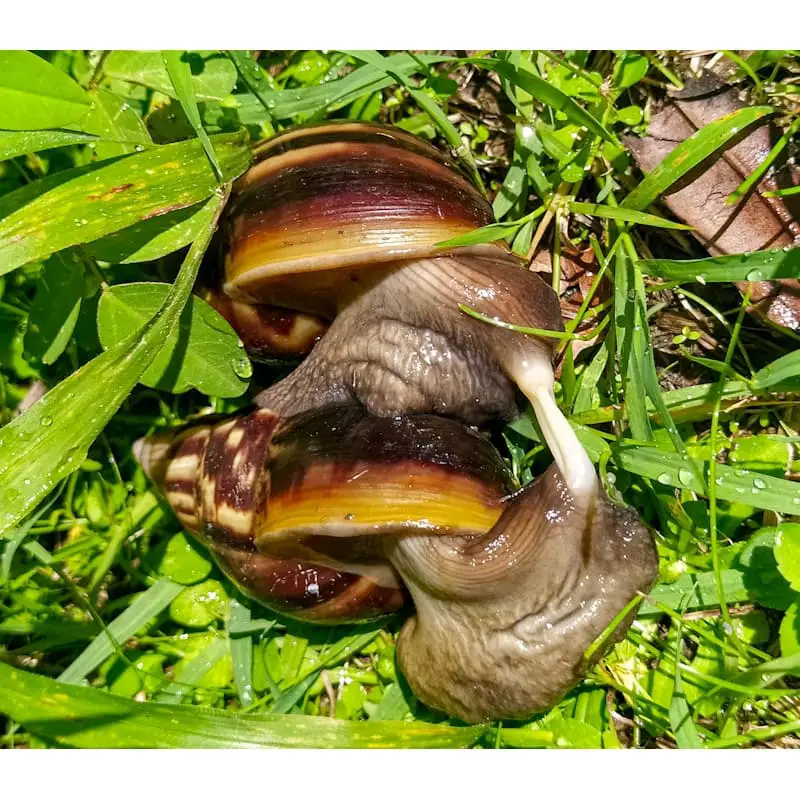
Reproduction and Life Cycle
Mating Behavior
Giant African Land Snails are hermaphrodites, meaning each individual contains both male and female reproductive organs. During mating season, which occurs during the rainy season in their native habitat, snails will engage in a courtship ritual that can last for hours. This ritual often involves circling one another while touching tentacles before mounting and exchanging sperm.
Interestingly, GALS do not mate frequently. In fact, they may only mate once or twice per year.
The reproductive cycle of these snails is heavily influenced by environmental factors such as temperature and rainfall. If conditions are not optimal for reproduction, GALS will go into a period of dormancy until conditions improve.
Egg-Laying Process
After mating has occurred, Giant African Land Snails will lay a clutch of eggs that can range from 100 to 500 eggs depending on the size of the snail. These eggs are deposited underground or in protected areas such as under leaf litter or logs to protect them from predators.
The incubation period for these eggs is approximately 2-4 weeks depending on environmental conditions such as temperature and humidity. After hatching, the young snails will consume their own eggshells for nourishment before emerging from the soil to begin their life cycle.
Development Stages from Hatchling to Adult
As hatchlings emerge from the soil, they are tiny versions of their adult counterparts and must immediately begin feeding on plant material to grow and mature. GALS undergo several distinct stages of development throughout their lives.
The first stage is called the juvenile stage where they continue to grow and develop over a period of several months. During this time they shed their shells several times before reaching sexual maturity at around 6-12 months old.
Once sexually mature, Giant African Land Snails can continue to grow for several years, with some individuals living up to 10 years in the wild. As they age, their shells will become thicker and more visible rings will appear on the shell.
Overall, understanding the reproductive and life cycle of Giant African Land Snails is important for both conservation efforts and management of invasive populations. With proper education and control measures, we can work towards protecting these fascinating creatures while minimizing negative impacts on ecosystems where they do not belong.
Human Interaction with GALS
Giant African Land Snails have been used as a food source in various cultures throughout history. In West Africa, they are considered a delicacy and are often served as a stew or roasted. Some people believe that consuming GALS provides nutritional benefits, including being high in protein, low in fat, and containing essential vitamins and minerals.
However, there are potential risks associated with handling or consuming these snails. Additionally, the pet trade industry has contributed to widespread distribution of Giant African Land Snails outside of their natural range.
Due to their unique appearance and relatively low maintenance requirements for keeping them as pets, they have become popular among collectors around the world. However, this has resulted in some individuals releasing them into the wild when they are no longer able to care for them properly.
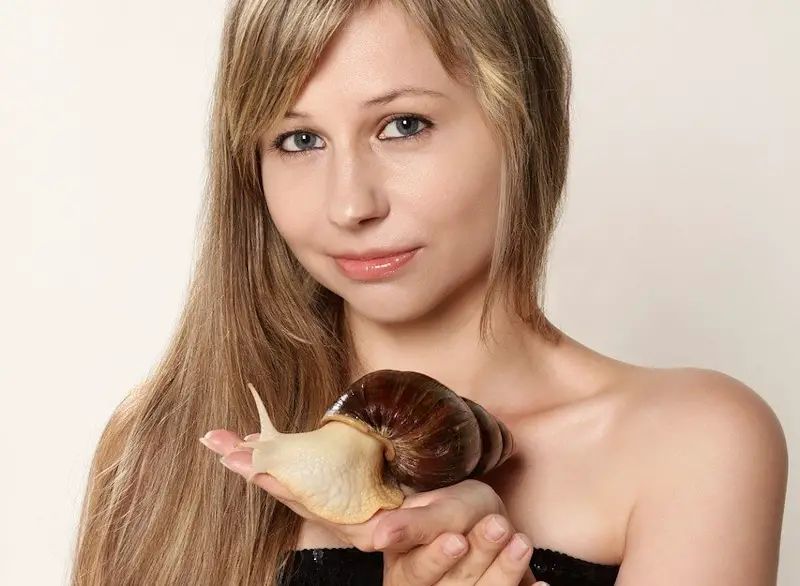
Use as a Food Source in Some Cultures
While GALS may provide some nutritional benefits, there are also potential health risks associated with consuming them. These snails can carry parasites such as Angiostrongylus cantonensis (rat lungworm), which can cause meningitis or other serious health issues if ingested by humans. Additionally, GALS may accumulate toxins from the plants they consume if those plants contain harmful chemicals.
Despite these risks, some people continue to consume Giant African Land Snails on a regular basis. The preparation process involves purging the snails of any toxins or harmful substances prior to cooking them thoroughly.
Pet Trade Industry
The pet trade industry has played a significant role in the spread of Giant African Land Snails outside of their natural habitat. While they may seem like harmless pets due to their slow-moving nature and relatively simple care requirements (such as providing moisture and a suitable diet), these snails can easily escape from captivity and reproduce rapidly in new environments.
In many countries where GALS are considered invasive species, it is illegal to import, sell, or keep them as pets. However, some individuals still purchase them through online marketplaces or from unlicensed sellers.
Risks Associated with Handling or Consuming GALS
In addition to the health risks associated with consuming GALS mentioned earlier, there are also potential dangers involved in handling them. These snails can carry bacteria such as Salmonella and E. coli, which can be transmitted through contact with their skin or slime trails. Furthermore, Giant African Land Snails have a natural defense mechanism where they retract into their shell and release a pungent odor when they feel threatened.
This odor can be overpowering and may cause respiratory distress in some individuals. When handling these snails, it is important to wash hands thoroughly before and after contact and to avoid touching the face or mouth.
Conclusion
Overall, while Giant African Land Snails may seem like fascinating creatures to keep as pets or consume as food, it is important to consider the potential risks associated with these interactions. Additionally, the spread of this species outside of their natural range has caused significant ecological damage in many areas around the world. As responsible stewards of our planet’s biodiversity, we should take steps to prevent further introduction of invasive species like GALS and educate others about the importance of preserving our natural habitats.
Conservation Efforts
The Giant African Land Snail (GALS) is considered a pest in most regions where it has been introduced. This is mainly because it has no natural predators and reproduces rapidly.
As such, GALS pose a threat to agriculture and the environment. It’s important to have conservation measures in place to prevent further spread.
Threats to GALS Populations in Their Natural Habitat
GALS populations in their native habitat have been declining due to habitat destruction, over-harvesting, climate change, and pollution. In some areas of Africa, GALS are considered a delicacy and are hunted for food.
Additionally, deforestation is causing loss of habitat for the species. The decline of GALS populations in their natural habitat can affect the ecosystem as they play an important role as decomposers by breaking down dead plant matter into nutrients that other organisms can use.
Control Measures for Invasive Populations
Invasive populations of GALS can be controlled through various methods including manual removal, baiting with toxic baits or pheromones, biological control using predators such as snakes or birds that prey on snails or parasites that infect snails. One popular method used to control invasive GALS population is manual removal.
This involves collecting snails by hand or using traps and disposing of them appropriately. Toxic baits or pheromones can be used as well but caution must be taken as these methods may harm non-targeted species such as dogs or cats who might ingest the baits accidentally.
Importance of Education in Preventing Further Spread
Educating people about the dangers posed by invasive species like GALS can help prevent further spread of this pest. This includes awareness programs, campaigns on responsible pet ownership, and strict regulations on the importation of GALS as pets or for food. Education should be targeted at farmers too, who need to be educated about the risks posed by importing exotic crops that are hosts to GALS.
In general, the public needs to be made aware of the risks associated with invasive species and how they can help prevent their spread. Simple actions such as not releasing unwanted pets into natural habitats or checking boots and camping equipment for hitchhiking snails can go a long way in preventing further spread of GALS.
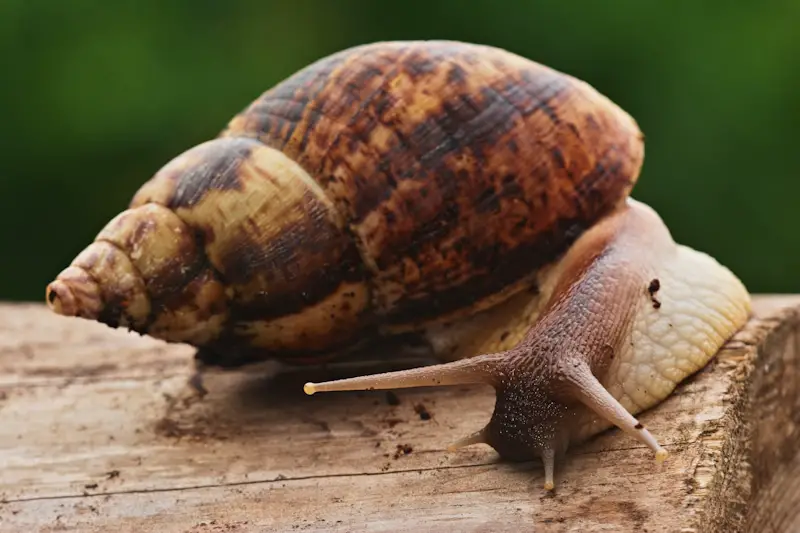
Fun Facts about GALS
Giant African Land Snails have some unique abilities that make them fascinating creatures to learn about:
- GALS can hibernate during droughts by sealing themselves inside their shells with a layer of mucus to prevent dehydration.
- Some individuals have been known to reach over 20cm in length and weigh up to 1kg!
- GALS are hermaphrodites (have both male and female reproductive organs) and mate by exchanging sperm.
- They are nocturnal animals, preferring to come out at night when it is cooler.
- Giant African Land Snails have an excellent sense of smell which they use to find food and mates.
While Giant African Land Snails may seem like fascinating creatures, it’s crucial not to underestimate the threats that they pose as invasive species. It is important that we take appropriate measures in controlling their spread while also focusing on conserving populations in their native habitat before it’s too late.
Unique Abilities: Hibernation during Droughts
The ability to hibernate during droughts is one of the most unique traits of the Giant African Land Snail. During times of extreme dryness, these snails can disappear into their shells and become completely dormant until more favorable conditions return.
In some cases, they may remain in this state for up to three years before emerging once again. This survival mechanism allows GALS to thrive in areas where other animals would struggle to survive.
It also means that populations can quickly rebound after natural disasters such as wildfires or floods. While this trait may seem like an advantage for the snails themselves, it can be detrimental when they are introduced into non-native habitats where there are no natural predators or environmental pressures to keep their populations in check.
Record-Breaking Sizes Reached by Some Individuals
The Giant African Land Snail’s name is not just hyperbole – these creatures can truly grow to enormous sizes. The largest recorded GALS was over 15 inches long and weighed in at nearly 2 pounds. While this size is unusual, it is not unheard of for these snails to reach lengths of 10-12 inches.
This makes them one of the largest land snails in the world, and a popular choice for collectors and enthusiasts alike. It’s worth noting that excessive growth can be a sign of poor health or malnourishment, so responsible pet owners and breeders should take care to provide their snails with a balanced diet and proper living conditions.
Conclusion
The Giant African Land Snail may be fascinating, but it’s important to remember that they can also be highly destructive when introduced into non-native habitats. As with any other invasive species, it’s crucial that we take steps to prevent their spread and protect native ecosystems. At the same time, however, there is much to appreciate about these unique creatures.
From their impressive size to their ability to survive in extreme environments, the Giant African Land Snail is truly a wonder of the natural world. By studying and understanding them better, we can hopefully strike a balance between preservation and appreciation for these fascinating creatures.

